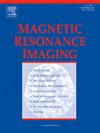Accelerated ultrashort echo time quantitative magnetization transfer (UTE-qMT) imaging of macromolecular fraction (MMF) in cortical bone based on a self-attention convolutional neural network
IF 2
4区 医学
Q2 RADIOLOGY, NUCLEAR MEDICINE & MEDICAL IMAGING
引用次数: 0
Abstract
Purpose
To combine ultrashort echo time quantitative magnetization transfer (UTE-qMT) imaging with a self-attention convolutional neural network (SAT-Net) for accelerated mapping of macromolecular fraction (MMF) in cortical bone.
Materials and methods
This institutional review board-approved study involved 31 young female subjects (young control, <45 years) and 50 postmenopausal subjects (6 normal (old control), 14 with osteopenia (osteopenia group), and 30 with osteoporosis (OP group)). After written informed consent was obtained from each subject, 15 UTE-qMT images of the tibial midshaft were acquired with three saturation powers (500°, 1000°, and 1500°) and five frequency offsets (2, 5, 10, 20, and 50 kHz) for each power to estimate the baseline MMF using a two-pool model. The densely connected SAT-Net model was used to predict bone MMF maps based on seven evenly distributed UTE-qMT images, which were well separated in terms of MT powers and frequency offsets (namely 5 and 20 kHz for 500° and 1500°, and 2, 10, 50 kHz for 1000°). Errors relative to the baseline MMF were calculated. Linear regression was used to assess the performance of the SAT-Net model. The mean MMF values for different groups were calculated.
Results
Conventional two-pool modeling of seven evenly distributed UTE-qMT input images shows a significant relative error of ∼34 %. In comparison, the SAT-Net model accurately predicted MMF values for the tibial midshafts of 81 human subjects with a high correlation (R2 = 0.97, P < 0.0001) between the baseline and predicted values. The SAT-Net model accelerated UTE-qMT data acquisition by 2.1-fold, with relative errors in MMF mapping less than 2.4 %. The average MMF values were 46.10 ± 13.25 % for the young control group, 40.03 ± 2.56 % for the old control group, 31.22 ± 13.18 % for the osteopenia group, and 22.53 ± 8.12 % for the OP group.
Conclusion
While it is difficult to accelerate MMF mapping in bone using conventional two-pool modeling, the SAT-Net model allows accurate MMF mapping with a substantial reduction in the number of UTE-qMT input images. UTE-qMT with SAT-Net makes clinical evaluation of bone matrix possible.
基于自注意卷积神经网络的骨皮质大分子组分加速超短回波时间定量磁化转移成像
目的将超短回波时间定量磁化转移(UTE-qMT)成像与自注意卷积神经网络(SAT-Net)相结合,用于骨皮质大分子组分(MMF)的快速定位。材料和方法本研究经机构审查委员会批准,纳入31名年轻女性受试者(年轻对照组,45岁)和50名绝经后受试者(6名正常(老年对照组),14名骨质减少(骨质减少组),30名骨质疏松(OP组))。在获得每位受试者的书面知情同意后,获得15张胫骨中轴的te - qmt图像,具有三种饱和功率(500°、1000°和1500°)和五种频率偏移(2、5、10、20和50 kHz),以使用双池模型估计基线MMF。使用密集连接的SAT-Net模型预测基于7个均匀分布的UTE-qMT图像的骨MMF图,这些图像在MT功率和频率偏移(即500°和1500°时的5和20 kHz,以及1000°时的2、10和50 kHz)方面分离良好。计算相对于基线MMF的误差。使用线性回归来评估SAT-Net模型的性能。计算各组MMF均值。结果对7张均匀分布的UTE-qMT输入图像进行传统的双池建模,显示出显著的相对误差(~ 34%)。相比之下,SAT-Net模型准确预测了81例人类受试者胫骨中轴的MMF值,相关性高(R2 = 0.97, P <;0.0001),基线值与预测值之间。SAT-Net模型将UTE-qMT数据采集速度提高了2.1倍,MMF映射的相对误差小于2.4%。年轻对照组MMF平均值为46.10±13.25%,老年对照组为40.03±2.56%,骨质减少组为31.22±13.18%,OP组为22.53±8.12%。虽然使用传统的双池建模很难加速骨中MMF的定位,但SAT-Net模型可以通过大幅减少UTE-qMT输入图像的数量来实现准确的MMF定位。ut - qmt结合SAT-Net使临床评价骨基质成为可能。
本文章由计算机程序翻译,如有差异,请以英文原文为准。
求助全文
约1分钟内获得全文
求助全文
来源期刊

Magnetic resonance imaging
医学-核医学
CiteScore
4.70
自引率
4.00%
发文量
194
审稿时长
83 days
期刊介绍:
Magnetic Resonance Imaging (MRI) is the first international multidisciplinary journal encompassing physical, life, and clinical science investigations as they relate to the development and use of magnetic resonance imaging. MRI is dedicated to both basic research, technological innovation and applications, providing a single forum for communication among radiologists, physicists, chemists, biochemists, biologists, engineers, internists, pathologists, physiologists, computer scientists, and mathematicians.
 求助内容:
求助内容: 应助结果提醒方式:
应助结果提醒方式:


